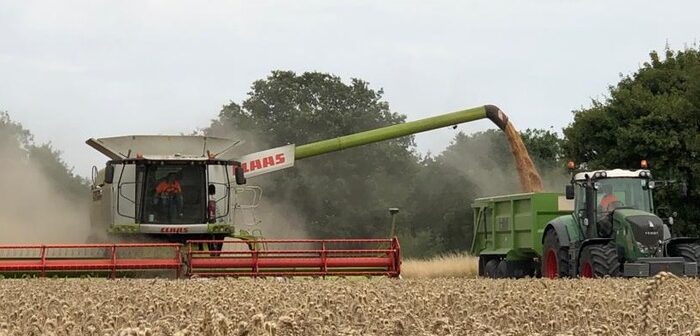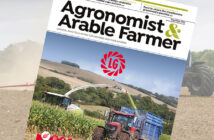With wheat harvests starting for some, it is no surprise to see yields are down, although performance is probably better than many expected following the driest spring in a century for many regions.
This reflects the mood of Overbury Enterprises farm manager Jake Freestone. With much of the barley not getting above knee height, Ferris and Buccaneer have come in under the farm average.
“Yields are disappointing but it isn’t a surprise. Two fields of Buccaneer on the sandy land have come in around 6.0 t/ha the other just under 5 t/ha. On the heavier land yields have ranged from 6.5 t/ha to 8.0 t/ha,” he notes.
The wheat harvest started in mid-July, the earliest he can recall. Again, yields are disappointing with the blend of thin breadmaking varieties below the farm average.
The news from the Met Office that climate extremes are now the norm is something he agrees with, extreme periods of wet, dry or hot weather the future of farming.
Trying to look for positives, Jake says at least he hasn’t got to dry the crops. “We just need to move on,” he adds.
Until rain arrives, everything is on hold. “The ‘five-minute’ fallow period is paused. There is no point planting crops into bone-dry ground,” he adds.
At P.X. Farms, Cambridgeshire, James Peck is also trying to put a positive spin on things. The first barley field harvested achieved 8.76 t/ha over the weighbridge but as the combine moved into lighter land, so yields dropped off. However, some fields were damaged by East West Rail contractors, James rather taken aback by the damage done by regular travel.
The difference between the light and heavy land is 4t/ha. James was hoping the average would creep up to 7.0 t/ha but with harvest complete, it came out at 6.7 t/ha. “For us to meet our budget, the grain price has got to lift to £200/t. It’s quite devastating,” he says.
Reduced yields are compounded by reduced straw. James would expect eight bales/ha, but it has been a disappointing two.
However, with a similar situation across much of Europe, James is optimistic that grain prices might move in a positive direction.
The results are causing him to review his variety choices for next season. Conventional two-row variety L G Caravelle has come in just behind hybrid S Y Kingsbarn, and ahead of S Y Armadillo and Belfry. He wonders whether the premium seed cost is worth it. “We put a field in just to see how it went compared to hybrids. It’s £100/ha in the bank before you put it into the ground.”
At Coxalls Farming, barley yields were quite pleasing given the season, achieving over 11.0 t/ha at Burwell in Cambridgeshire and 9.0 t/ha at Royston, Herts.
For MD Thomas Coxall, it has been their crop of their season and demonstrates the benefits of hybrids, with their vigour allowing the crop to scavenge moisture and nutrients. “The roots went down into the chalk and the crop never looked back,” he says.
Joining Kingsban next season is another Syngenta variety, Quantock.
However, the moisture levels have been as low as 9%, the loss of half a lorry load as Thomas puts it. To bring the weight back up they are adding water to the grain. As a result, they have been forced to add water via a hose rigged up to the bins.
The wheat harvest has already started, 400 ha already in the can, the earliest Thomas can ever recall. However, he describes yields as “extremely disappointing” at just 8t/ha.




